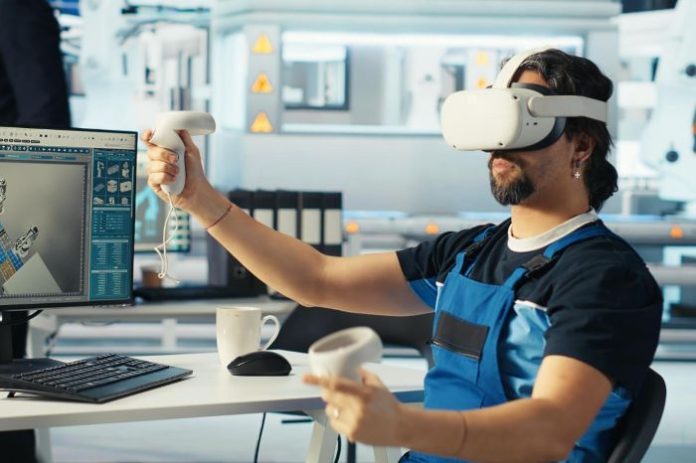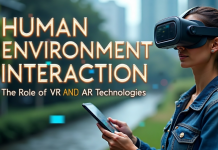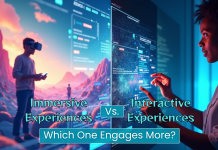One of the most exciting shifts in design and engineering is the integration of immersive technologies with CAD design software, which has accelerated at a rapid pace in recent years. Virtual reality (VR) and augmented reality (AR) are no longer niche tools reserved for gaming or entertainment. Instead, these immersive environments are transforming how designers, engineers, and stakeholders engage with complex models and collaborate across distances.
This article assesses how immersive environments are transforming CAD workflows, examining current capabilities and future directions.
Table of contents
The Convergence of Immersive Tech and CAD: Context & Motivation
Traditional CAD platforms, while powerful, constrain the designer’s perspective to flat viewports on a screen. Manipulating 3D models with a mouse and keyboard often feels indirect, which can limit spatial understanding and intuition. VR and AR technologies aim to bridge the gap, enabling designers to step inside their creations and interact with them on a large scale.
By improving spatial awareness, immersive CAD helps reduce the need for expensive physical prototypes while streamlining communication with non-technical stakeholders. Clients and decision-makers can now walk through a proposed design, gaining clarity that 2D renderings or screen shares can’t provide. This shift is particularly useful in industries where precision and scale are vital, such as architecture, automotive, and aerospace engineering.
For example, in building design, walking through a structure before it exists allows teams to identify potential problems in layout, accessibility, or ergonomics before construction begins. Similarly, in mechanical design, engineers can evaluate the fit and function of components more intuitively when viewing them at life-size scale.
Modern Tools, Interfaces, and Workflows
Recent advancements have made immersive design increasingly accessible. Some VR-CAD systems integrate directly with modelling kernels like OpenCASCADE, allowing real-time editing in engines such as Unreal or Unity. In other workflows, automated pipelines convert CAD files into VR-ready scenes, enabling quick transitions from desktop to immersive review. Platforms like Theorem Solutions already provide CAD-to-XR automation, supporting compatibility with multiple headsets.
User interfaces are also adapting. Designers can now manipulate models using six degrees of freedom (6 DoF), perform gesture-based operations, or leverage collision-based editing that mimics the feel of physical modelling. Experimental frameworks are pushing further, enabling parametric edits directly within immersive environments.
These tools open up opportunities not only for designers but also for educators and trainees. Engineering students can now explore assemblies in VR, gaining a more intuitive understanding of mechanical systems. Training simulations also benefit from immersive CAD models, where users can practice procedures in a safe and controlled environment.
Collaboration and Decision Making in XR Immersive Environments
Instead of relying on static screenshots or video calls, teams can conduct immersive design review meetings (DRMs), where participants interact with the model in real time. CAD improves decision-making by reducing ambiguity and supporting more inclusive stakeholder input.
Campfire’s AR/VR platform, adopted by Collins Aerospace, enables distributed teams to examine complex aerospace assemblies together, complete with annotations and co-editing.
Compared to 2D screen sharing, these immersive sessions provide richer communication, although challenges remain around latency and synchronising versions across platforms.
The collaborative potential extends beyond engineering firms. Architects and urban planners can invite city officials or clients into shared immersive environments to evaluate public spaces or infrastructure projects. In product design, marketing teams can even preview consumer experiences, ensuring alignment between design intent and customer expectations.
As more organizations adopt hybrid and remote work, immersive CAD environments may become essential for distributed teams, functioning as virtual meeting rooms where the model itself is the central point of discussion.
Challenges and Future Prospects
Rendering highly detailed CAD geometry in real time remains computationally demanding, particularly when collision detection and interference checking are required. Ergonomics also pose challenges (extended headset use can lead to discomfort), and integrating immersive platforms seamlessly into established CAD toolchains takes careful planning.
Adoption depends on training and cultural readiness, as well as prices, but AI-driven design assistants are already easing performance bottlenecks. Hybrid AR/VR modes may soon enable designers to transition seamlessly between desktop precision and immersive exploration.
Looking further ahead, the combination of immersive CAD with generative design and AI could open entirely new workflows. Imagine an engineer stepping into a VR workspace, specifying design constraints through natural gestures or voice commands, and watching as AI generates optimized variations in real time. Similarly, AR headsets may enable engineers on-site to overlay CAD models directly onto physical spaces, accelerating assembly, inspection, and maintenance.
Standardization across platforms will also play a role in adoption. As file formats and APIs become more unified, the process of moving models between desktop CAD, immersive environments, and manufacturing pipelines will become smoother. This will lower barriers to entry and encourage more firms to experiment with immersive design.
Conclusion
The integration of VR and AR into CAD workflows is more than a technological upgrade—it represents a shift in how humans interact with digital creations. By enhancing spatial understanding, streamlining collaboration, and reducing reliance on physical prototypes, immersive environments promise to make design and engineering more efficient, intuitive, and inclusive.
While challenges remain in areas such as hardware ergonomics, rendering performance, and cultural adoption, the trajectory is clear. Immersive CAD is moving from experimental to mainstream, and the coming years will likely see it become a standard tool in the designer’s toolkit. For industries driven by precision, innovation, and collaboration, the fusion of CAD with immersive technologies is not just the future—it is rapidly becoming the present.











